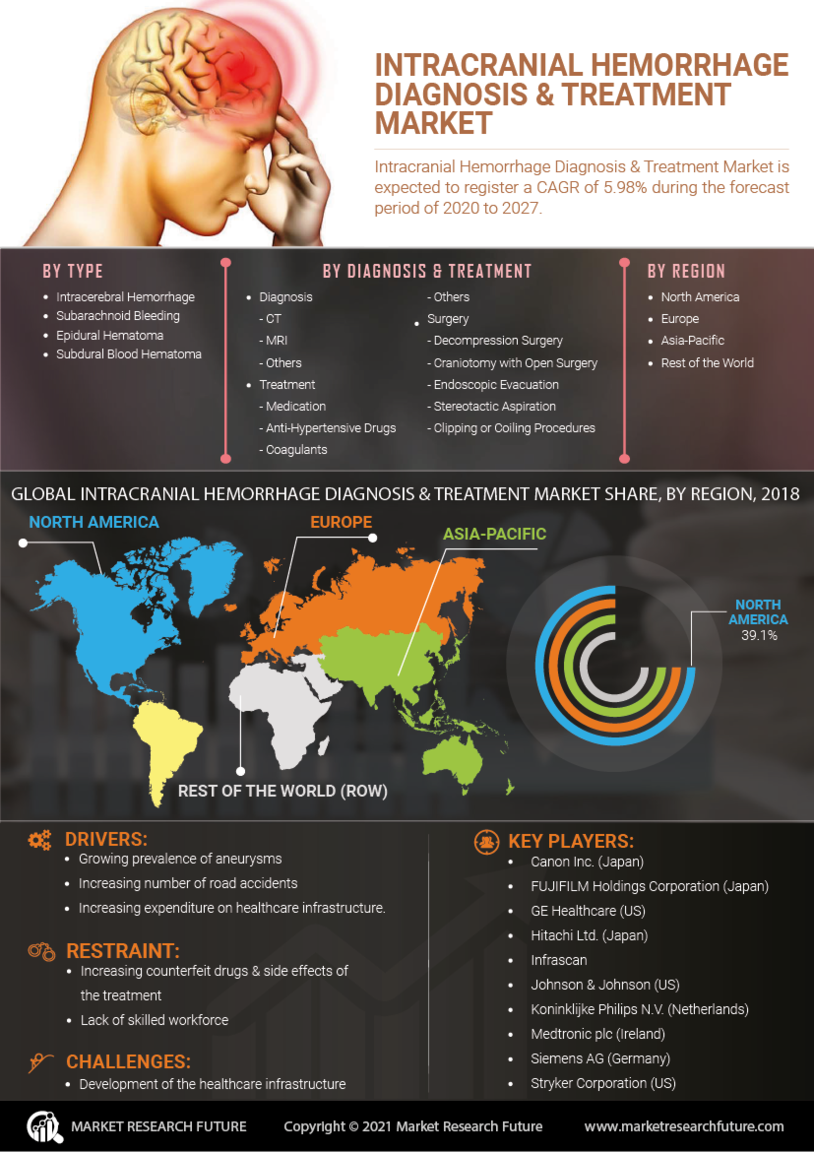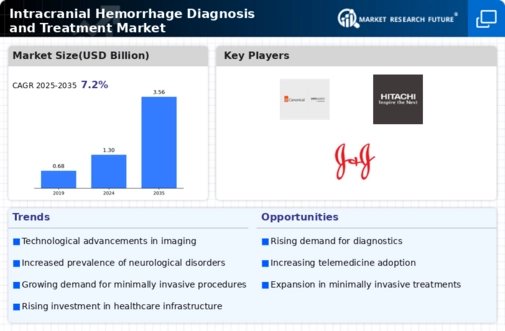Market Growth Projections
The Global Intracranial Hemorrhage Diagnosis and Treatment Market Industry is projected to experience substantial growth over the next decade. With a market value of 1.3 USD Billion in 2024, it is anticipated to reach 3.56 USD Billion by 2035, indicating a robust compound annual growth rate of 9.59% from 2025 to 2035. This growth is driven by various factors, including advancements in technology, increased healthcare spending, and a rising incidence of intracranial hemorrhage. The market's expansion reflects the growing recognition of the need for effective diagnostic and treatment solutions in managing this critical health issue.
Emerging Treatment Options
The emergence of novel treatment options for intracranial hemorrhage is a key driver in the Global Intracranial Hemorrhage Diagnosis and Treatment Market Industry. Innovative therapies, including minimally invasive surgical techniques and new pharmacological agents, are being developed to improve patient outcomes. For instance, advancements in endovascular procedures have shown promise in managing hemorrhagic strokes effectively. These developments not only enhance the treatment landscape but also attract investment and research into the field, potentially leading to a more robust market. As these options become more widely available, they are expected to contribute to the overall growth of the market.
Growing Awareness and Education
The Global Intracranial Hemorrhage Diagnosis and Treatment Market Industry is benefiting from increased awareness and education regarding stroke symptoms and the importance of timely treatment. Campaigns aimed at educating the public about the signs of intracranial hemorrhage have led to earlier presentations to healthcare facilities. This awareness is crucial, as timely diagnosis and treatment can significantly improve patient outcomes. As more individuals recognize the symptoms and seek medical attention promptly, the demand for diagnostic and treatment services is likely to rise, further propelling market growth.
Increased Healthcare Expenditure
Rising healthcare expenditure globally is a significant driver for the Global Intracranial Hemorrhage Diagnosis and Treatment Market Industry. Governments and private sectors are investing more in healthcare infrastructure, which includes advanced diagnostic and treatment facilities for conditions like intracranial hemorrhage. For instance, countries are allocating larger budgets for neurology departments, thereby enhancing the availability of specialized care. This trend is expected to support the market's growth, with estimates suggesting that the market could reach 3.56 USD Billion by 2035, reflecting the increasing prioritization of neurological health.
Advancements in Diagnostic Technologies
Technological advancements in imaging modalities such as CT and MRI are driving the Global Intracranial Hemorrhage Diagnosis and Treatment Market Industry. Enhanced imaging techniques allow for quicker and more accurate diagnosis of intracranial hemorrhages, facilitating timely interventions. For example, the development of portable CT scanners has improved access to diagnostic services in emergency settings. These innovations not only enhance patient outcomes but also increase the efficiency of healthcare systems. As a result, the market is likely to expand, with a projected compound annual growth rate of 9.59% from 2025 to 2035, reflecting the growing reliance on advanced diagnostic tools.
Rising Incidence of Intracranial Hemorrhage
The Global Intracranial Hemorrhage Diagnosis and Treatment Market Industry is experiencing growth due to the increasing incidence of intracranial hemorrhage, which is often linked to factors such as hypertension, trauma, and aging populations. As the global population ages, the prevalence of conditions that lead to hemorrhagic strokes is expected to rise. For instance, statistics indicate that the incidence of intracranial hemorrhage is projected to increase, leading to a heightened demand for effective diagnostic and treatment solutions. This trend is expected to contribute significantly to the market, with projections estimating a market value of 1.3 USD Billion in 2024.




